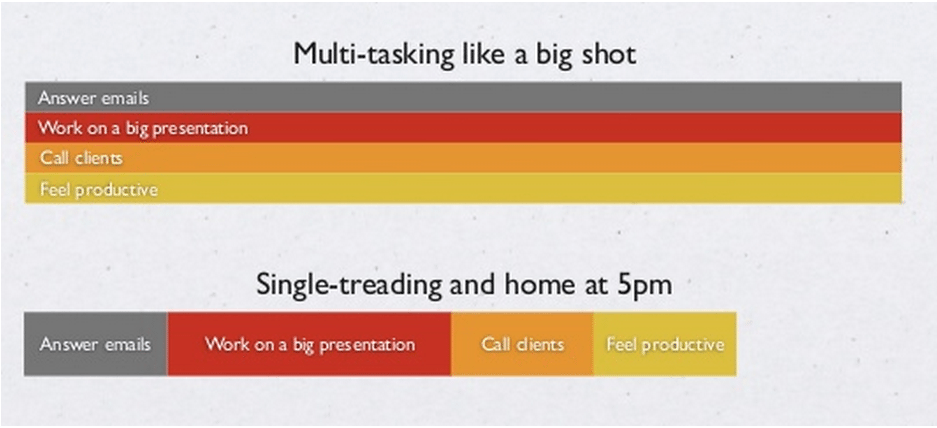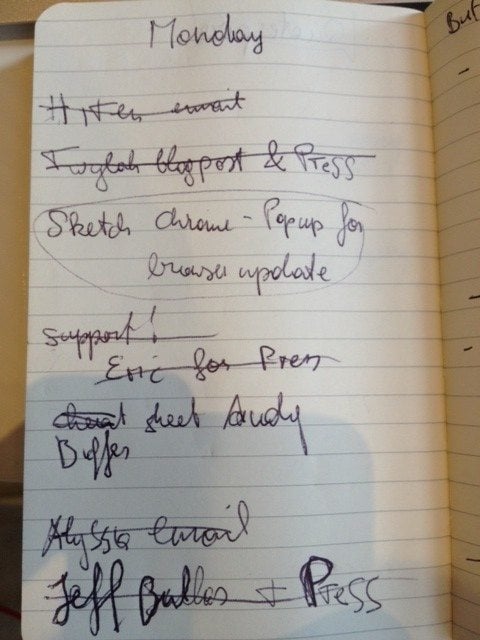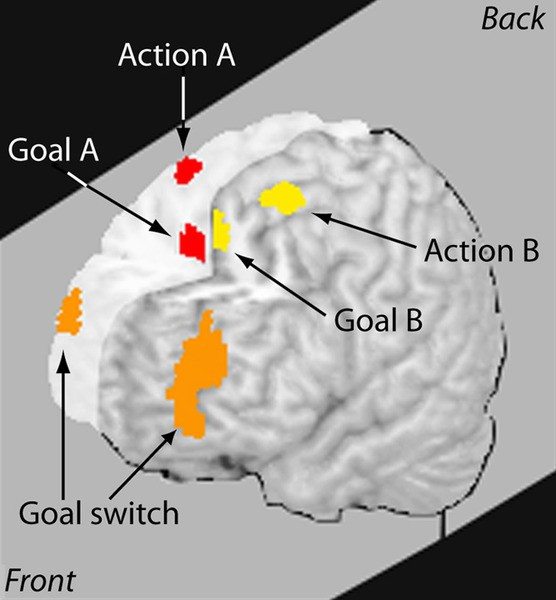
We all know this and have heard it hundreds of times. To work efficiently we have to single task. No multitasking.
And yet, we let it slip. We end up eating lunch in front of the TV with our laptop open. We browse Twitter and Facebook while sending emails and chatting in multiple Gchat windows. We know we really should be focusing on just that one assignment, blog post, proposal or piece of code but we just can’t.
For the vast majority of us, multitasking by working on different things at the same time makes us less efficient. Why the heck is it so hard to focus on just one thing then?
Recently I started to develop a new work routine online, that specifically focuses on singletasking only. The results I got were amazing and I want to share more on this further down.
To understand what actually goes on in our brains and see if it all makes sense, I went ahead and found some stunning research and answers to these questions:
Why we multitask in the first place: It makes us feel good
To understand why we always fall into the habit of multitasking, when we know we shouldn’t, I found some very interesting studies. The answer is in fact quite simple:
“[People who multitask] are not being more productive — they just feel more emotionally satisfied from their work.”
This is what researcher Zhen Wang mentions in a recent study on multitasking. She mentioned that if we study with our books open, watch TV at the same time and text friends every so often, we get a great feeling of fulfillment. We are getting all these things done at once, and we feel incredibly efficient.
Unfortunately, exactly the opposite is the case. Students who engaged heavily in multitasking activities felt great, but their results were much worse than that of people who didn’t multitask.

Another problem is that multitaskers seem very efficient from the outside, so we want to be like them. We see someone who can juggle emailing, doing phone calls and writing a blogpost on the side and think, “That is incredible! I want to be able to do that too!”
So very unknowingly, we put a lot of pressure onto ourselves to juggle more and more tasks. When really, it only seemingly makes us more productive. The daily output, as Wang found, only decreases.
What is going on in our brains when we multitask?
The interesting part is that our brains can’t multitask at all. If we have lunch, fire open five Facebook chat windows and also try to send off an email, it isn’t that our brain focuses on all these activities at the same time.
Instead, multitasking splits the brain. It creates something researchers have “spotlights”. So all your brain is doing is trying to frantically switch between the activities eating, to writing emails and answering chat conversations.
In the image below, you can see the different brain activities for various tasks that the brain switches between. It jumps back and forth as you focus on each task for a few seconds at a time:
Clifford Nass, a researcher at Stanford, assumed that those who multitask heavily would nonetheless develop some other outstanding skills. He thought that they would be amazing at filtering information, switching between tasks quickly and keeping a high working memory.
He found that none of these 3 points are true:
“We were absolutely shocked. We all lost our bets. It turns out multitaskers are terrible at every aspect of multitasking.”
People who multitask a lot are in fact a lot worse at filtering irrelevant information and also perform significantly worse at switching between tasks, compared to singletaskers.
Now most studies all point towards the fact that multitasking is very bad for us. We get less productive and skills like filtering out irrelevant information decline.
Personally, I noticed the same results even before I knew about these studies. I decided to put some processes in place, especially with working online, to win my productivity back and ban multitasking from my workflow once and for all.
How I developed a singletasking workflow
Before I learned about any of the above, I had my own struggles with multitasking. I would have 2 separate email inboxes, TweetDeck, Facebook and an instant messaging tool all open.
The thing was that I felt very much on top of things, hitting “command + tab” all the time to check if I missed anything in one of the windows. With every tab switch it felt as my head would get bigger, even though I was getting less and less done. Both my brain and my work was rather scattered.
I had to stop this immediately to work more productively on Buffer. To solve my multitasking madness, there were three key changes I made:
1. The single browser tab habit
One strategy I put in place is something I call single-tab browsing. I limit myself to only keeping one browser tab open whenever I am working. That way I have to really prioritize the most important task I’m working on.
Let’s look at an example. Some key tasks I am juggling are email support via our HelpScout inbox, Tweets for our @bufferapp account, blog posts for the Buffer blog and emails from my personal inbox.
Before, I would have all these things open at the same time. Now I work through them one by one. Only my HelpScout inbox is open. Then only TweetDeck is open to reply to any Tweets. Then I move on to close everything and only open Word to start writing. And finally I move to my personal email inbox, closing everything else again.
Doing this is only possible with another improvement I put in place:
2. The evening planning routine

This is my Moleskine filled with brainstormed tasks for the day.
The second thing that really makes my single browser tab habit possible is the evening planning routine.
Every evening, I sit down and jot down what I want to get done the next day. That’s a very common technique, and probably something that you have done before also. It’s a simple to-do list, that you learn to keep in elementary school.There was only a slight problem with to-do lists. I wouldn’t stick to them.
So I added a twist to it. Besides jotting down what I wanted to do, I would add a brief brainstorm with Joel. Doing this seemed like a small change, but made a huge difference.
When we sat down for just 10 minutes every evening to briefly walk through the tasks of the next day, everything changed in terms of productivity.
Instead of just writing tasks down, I was forced to think through them and explain them to someone else: “I want to write this article on this type of content, because of this inspiration I had. I will structure it like this..” and so forth.
The to-do list I jotted down didn’t change, but it felt as if I had done half the work of it all in my head already. The next day, all I had to do is look at the task and get it done.
If you keep a to-do list, but rarely stick to it, try the same and find a colleague, spouse or friend with whom to brainstorm 10 minutes every evening. You can do this for each other and frankly, it becomes a lot of fun to meet up for this quick brainstorm every day.
3. Change work location at least once a day
This is something that inevitably has made me more productive and focused on singletasking. We read many times that we have to work on building a comfortable work space to focus. What I found was this: I had to create many of them.
To regain focus after finishing one task and moving on to the next one, just spending 5 minutes as a break, getting a drink or similar didn’t work. Nor did closing the laptop for 5 minutes or standing up from my desk. I had to physically move from one place to another as part of my daily routine.
Most times I work out of my apartment for the first half of the day. Then I have a list of coffee shops I can go to, or the lounge area in our apartment building.
I know moving around isn’t possible for everyone. There are some very creative workarounds some companies have come up with though, that might help you here. Valve, dubbed “the bossless company”, gives every employee a desk mounted on wheels so they can change location during the day.
Quick last fact: listening to music while working isn’t multitasking
In case you were wondering whether now you also have to give up listening to music to be more productive, rest assured, that isn’t the case, Stanford Professor Clifford Nass mentions:
“In the case of music, it’s a little different. We have a special part of our brain for music, so we can listen to music while we do other things.”
Personally, I am very excited to challenge my own workflows and see how I can exchange my existing routines for more effective ones. Singletasking has had one of the most powerful effects more me. This has worked both for results for Buffer and my personal projects. Of course, this only works if grouped with other habits that set you up for a successful singletasking day.
How do you approach multitasking online? Do you have mechanisms in place that help you to conquer all distractions on the web? What do you do to avoid multitasking?
Try Buffer for free
140,000+ small businesses like yours use Buffer to build their brand on social media every month
Get started nowRelated Articles
We’ve written about creativity a few times on the Buffer blog, but it’s hard to keep track of everything we learn about it. One day I’m adjusting the temperature in my workspace, and the next I’m trying to put off creative work until I’m tired. If you’re in the same boat, and you find it’s difficult to remember what will improve your creativity and when you should do your most creative work, hopefully this list will help you get it all straight. 1. Your brain does better creative work when yo
I’ve noticed that the way I spend my lunch break affects how productive I am for the rest of the day: how quickly I get started once I get back to my desk, how effective I am in the first hour after lunch, and how I feel throughout the afternoon. Luckily, we’ve been writing about ways to improve your day for a while now: from tips on making your environment more conducive to creativity to pushing through writer’s block. Why shouldn’t the humble lunch break get the same treatment? I gathered th
Constraints can seem like the last thing you’d want for a creative project, but they’re actually beneficial when it comes to doing good work. If you’ve ever faced the common writer’s hurdle of the blank page, you’ll know what it’s like to be paralyzed by innumerable opportunities. What restrictions do is take away some of the choices available to us, and with them, the paralysis of choice that stops us from getting started. We love trying things that seem counterintuitive at Buffer, but we espe
